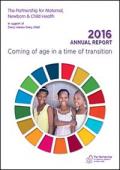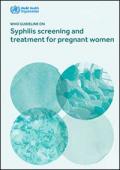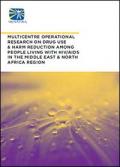What's New
Displaying results 1911 - 1920 of 4914

Resource | Guidelines,
To address a public health problem, you first have to measure it accurately. Biobehavioural surveys have proven to be invaluable tools for measuring and addressing HIV, which remains the world’s biggest public health challenge. This current iteration of the Biobehavioural survey guidelines is a welcome addition to the list of useful documents targeting those who plan to conduct biobehavioural surveys of HIV and HIV-risk behaviours in their countries.
The guidelines fill a gap in providing tools for surveying HIV prevalence in key populations, and the included questionnaires may also inform general population surveys.
Currently, many researchers undertake surveys using country-specific indicators. These guidelines standardize the conduct of biobehavioural surveys to permit comparisons between as well as within countries over time.

Resource | Publications,
The 2016 Annual Report sets out the key achievements of the Partnership in the first year of implementing its new Strategic Plan 2016-2020. The report highlights key moments, including the work of the Adolescent & Youth Constituency, the Partnership’s role in operationalizing the Unified Accountability Framework and extensive work done in 2016 to raise the profile of sexual, reproductive, maternal, newborn, child and adolescent health (SRMNCAH) in broader global health and development agendas. The partner-centric approach is evident throughout and the achievements documented are a testament to the power of partnership.

Resource | Publications,
This report compiles the latest body of evidence on how stigma and discrimination create barriers across the HIV prevention, testing and treatment cascades and reduce the impact of the AIDS response. The report also brings together best practices on confronting stigma and discrimination, providing a valuable resource for programme managers, policy-makers, health-care providers and communities. The evidence shows that the establishment of people-centred service delivery models, supportive legal and policy frameworks, monitoring and enforcement mechanisms, and sensitization training for health-care workers and other duty bearers can promote inclusion and increase access to services.

Resource | Guidelines,
Since the publication of the WHO Guidelines for the management of sexually transmitted infections in 2003, changes in the epidemiology of STIs and advancements in prevention, diagnosis and treatment necessitate changes in STI management.
This guideline provides updated recommendations for syphilis screening and treatment for pregnant women based on the most recent evidence and available serologic tests for syphilis.

Resource | Publications,
The Road Map was prepared through a consultative process that brought together more than 40 countries and organizations, including civil society organizations, networks of people living with HIV, faith-based organizations, networks of key populations and international organizations and foundations, to chart the way forward to achieving global HIV prevention goals by 2020. Country assessments and national consultations were organized in participating countries towards reaffirming national leadership for HIV prevention, reviewing progress and discussing accelerated action for prevention. Thematic consultations and case study reviews were also conducted to develop key elements of the Road Map, most of which are also contained in a global results framework first proposed in a journal article in 2016.

Resource | Publications,
This report provides the current state of the epidemic, drawing mainly from the HIV/AIDS and ART Registry of the Philippines, the latest projections from the AIDS Epidemic Modeling, and the most recent analyses of the Integrated HIV Behavioral and Serologic Surveillance. Best available evidence underscores the urgency to enhance and intensify interventions for key populations, specifically young males and transgender women who have sex with males (M/TSM) and people who inject drugs (PWID) who comprise a significant proportion of new infections. But in working with and among key populations, women—especially female partners of MSM and people who inject drugs—cannot be left behind if the country is to prevent further increase of HIV infection among pregnant women. This also takes stock of recent programmatic reforms and offers evidence to guide program and policy development. It documents the gains from recent enhancements to the country’s provision of HIV services (i.e. piloting of the rapid HIV diagnostic algorithm) and highlights persistent challenges in terms of linkage to care and viral load testing.

Resource | Publications,
Founded in 2007, APCOM is a coalition of members – governments, UN partners, non-profits and community based organisations – from Asia and the Pacific. APCOM represents a diverse range of interests working together to advocate on, highlight and prioritise issues that affect the lives of gay and bisexual men and other men who have sex with men (MSM), as well as other individuals of sexual orientation and gender identity minorities.
This report showcases APCOM's efforts in advocating for sexual health services, cultivating an enabling environment, generating and sharing strategic information, and building a cadre of advocates at all levels throughout the region.

Resource | Publications,
Propelled by the introduction of powerful and life-saving antiretroviral medications, the increasingly bio-medicalized global HIV response challenges us to rigorously reimagine prevention. While this is a welcome development in the global response to HIV, access to medical interventions is hampered by the costs of medicines, healthcare, testing and monitoring, and the politics of funding. In addition, gay and bisexual men, people who use drugs, sex workers, and transgender people are not prioritized for antiretroviral treatment or are offered only a limited number of places in treatment programs because these groups are not seen as deserving. Moralistic decision-making about who should have access to treatment is common (e.g., the requirement of absolute abstinence from drug use as a condition for services).
While access to antiretroviral medication used prophylactically or as treatment for HIV is an urgently needed human right, primary prevention should be conceptualized more broadly than expanded coverage of antiretroviral medications.

Resource | Publications,
Following a number of Operational Researches conducted with different focuses within the harm reduction and drug use fields, this Operational Research explores and assesses the situations and risks faced by People Living with HIV (PLHIV) who use drugs. There is no denying that PLHIV and People Who Use Drugs (PWUD) alike are stigmatized and highly discriminated against in our region, and PLHIV who use drugs are exposed to double stigma, often preventing proper access to essential life-saving services.
This report investigates and details the health-related harms, stigma and discrimination, service access and adherence barriers, as well as the impact of current (if existing) harm reduction strategies among PLHIV who use drugs. The results of this report should guide decision-makers and civil society organizations towards the provision of more comprehensive and accessible harm reduction and HIV services.

Resource | Publications,
In today’s world, gaps in wealth have grown shockingly wide. Billions of people linger at the bottom, denied their human rights and prospects for a better life. At the top, resources and privileges accrue at explosive rates, pushing the world ever further from the vision of equality embodied in the Universal Declaration of Human Rights.
Economic disparities are only one part of the inequality story. Many other social, racial, political and institutional dimensions feed on each other, and together block hope for progress among people on the margins.
Two critical dimensions are gender inequality, and inequalities in realizing sexual and reproductive health and rights; the latter, in particular, still receives inadequate attention. Neither explains the totality of inequality in the world today, but both are essential pieces that demand much more action.





